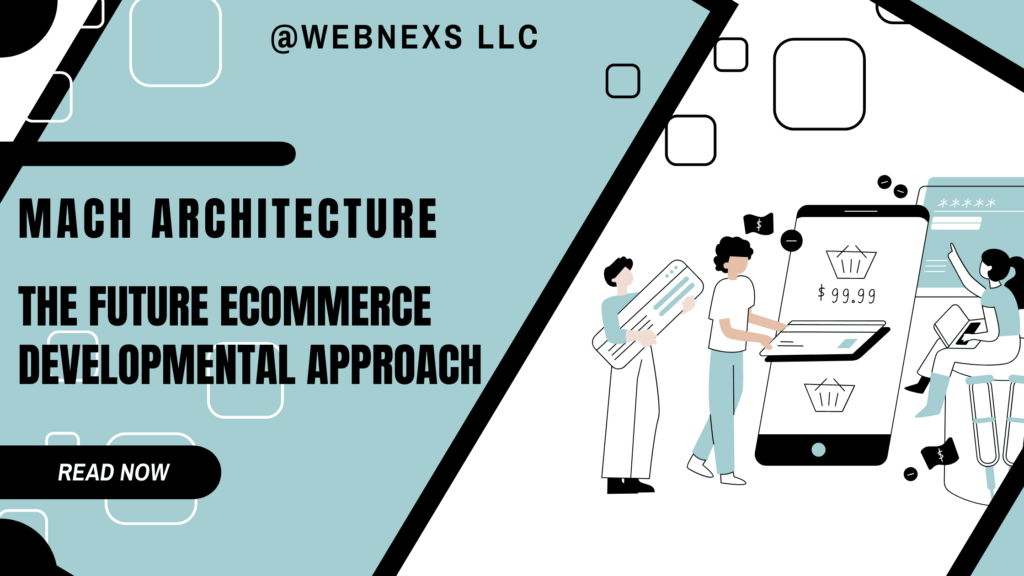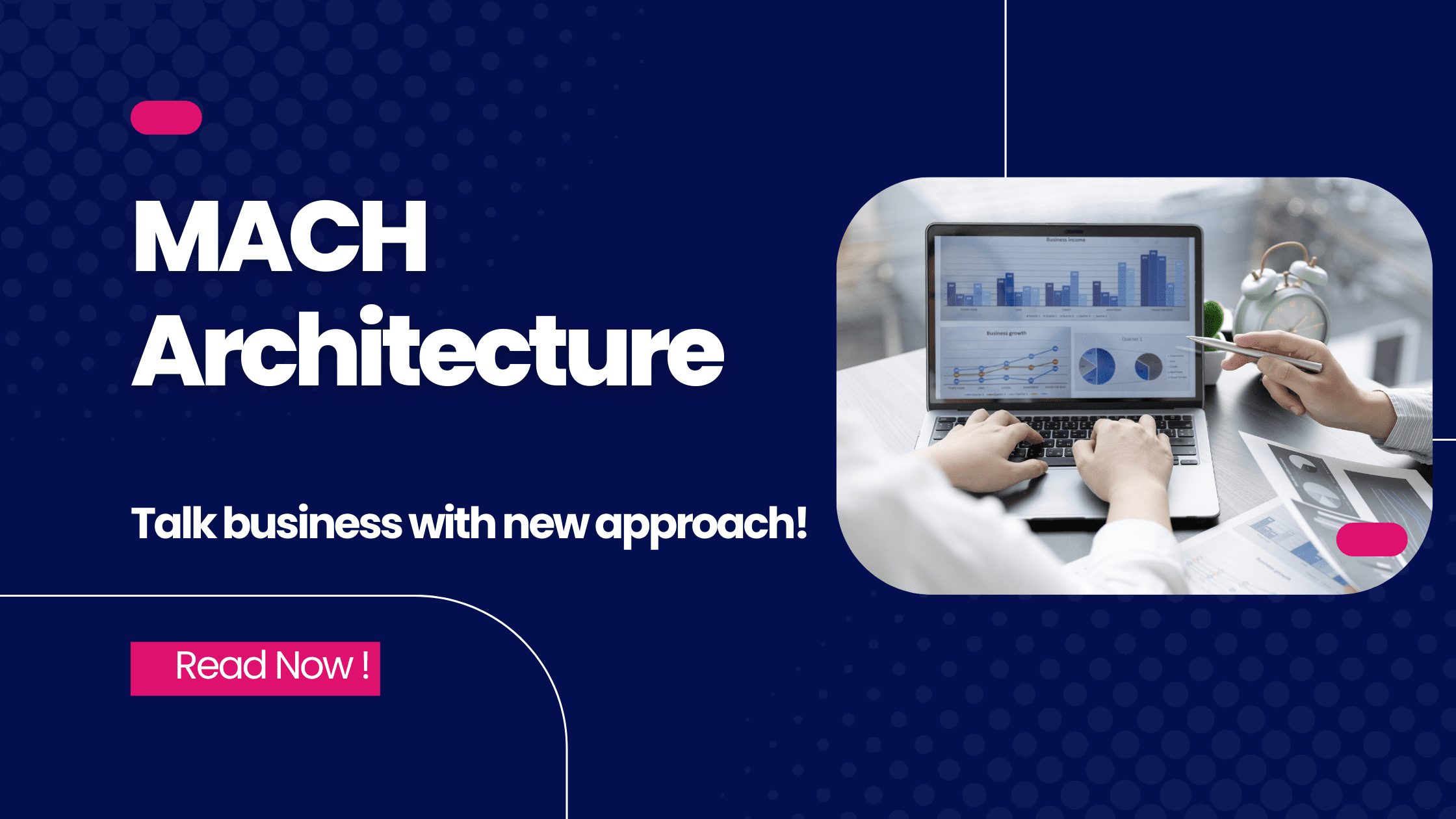As ecommerce continues to evolve, businesses are seeking innovative solutions to provide seamless digital experiences for their customers. One approach gaining traction is the implementation of MACH architecture. This article explores the benefits of MACH architecture in ecommerce and its impact on scalability, performance, and overall customer experience.
What is Headless MACH Architecture?
The term “MACH architecture” is derived from the abbreviation of four key principles: Microservices, API-First, Cloud-Native, and Headless CMS.It is an architectural framework designed to address the limitations of traditional monolithic ecommerce platforms. By adopting the MACH approach, businesses can leverage the advantages of decoupled components, scalability, and flexibility.
Key Components of MACH Architecture
Microservices
They are small, independent services that focus on specific business functionalities. By breaking down the ecommerce platform into modular microservices, businesses can achieve greater flexibility, scalability, and maintainability.
API-First Approach
The API-First approach emphasizes the importance of well-defined APIs as the primary means of communication between different components of the ecommerce system. APIs enable seamless integration with third-party systems, facilitate interoperability, and support the rapid development of new features.
Cloud-Native
Cloud-native architecture leverages the power of cloud computing and services. By embracing cloud technologies, businesses can benefit from scalability, high availability, and cost-efficiency. Cloud-native solutions provide the agility needed to respond to changing business demands effectively.
Headless CMS
Headless CMS refers to a content management system that distinguishes the process of content creation and management from its presentation layer. With headless CMS, businesses have the freedom to deliver content across various channels, such as websites, mobile apps, and voice assistants, while maintaining consistent content management.
Learn More: Decoupled And Headless Ecommerce Architecture Differences
Benefits of MACH Headless Architecture in Ecommerce
The e-commerce industry has increasingly embraced the (Microservices, API-first, Cloud-native, Headless) MACH architecture approach, which has gained significant popularity. Headless approach means that the frontend and backend of an ecommerce site are decoupled, allowing for more flexibility and agility.
Flexibility: With headless architecture, the frontend and backend are decoupled, allowing for more flexibility and agility. This means that changes can be made to the frontend or backend without affecting the other.
Faster Time-to-Market: Since the frontend and backend are decoupled, development teams can work on each independently, which speeds up the development process and enables faster time-to-market.
Scalability: MACH headless architecture is cloud-native and API-driven, which makes it highly scalable. The architecture can handle high traffic volumes and can be easily scaled up or down as needed.
Better User Experience: With a headless architecture, the frontend can be optimized for a better user experience. Designers and developers have more control over the frontend and can customize it to meet the needs of the users.
Omnichannel Support: MACH headless architecture enables retailers to provide an omnichannel experience to customers. API-first approach allows for seamless integration with various channels, such as social media platforms, mobile apps, and third-party marketplaces.
Lower Costs: The decoupled architecture allows for modular development and deployment, which reduces the cost of development and maintenance
Read More: Benefits Of Headless Commerce
Future Trends and Challenges in MACH Headless Architecture

Modular and Scalable Approach: This approach promotes modularity, enabling organizations to build and scale their systems in a more granular manner. This trend will likely continue, with companies leveraging microservices to create flexible, independent components that can be developed, deployed, and maintained separately.
API Economy Expansion: MACH architecture relies heavily on APIs to connect and integrate various services and systems. As organizations embrace MACH, the API economy is expected to expand further, leading to increased demand for API management solutions, standardization efforts, and the emergence of new API-based services.
Proliferation of Headless CMS: Headless CMS, a key component of the MACH headless architecture, provides content management capabilities decoupled from the presentation layer. This approach enables content reuse across multiple channels and devices. We can anticipate a proliferation of headless CMS solutions as organizations seek more flexibility and personalized content delivery.
Adoption of Cloud-native Technologies: MACH headless architecture aligns well with cloud-native technologies such as containers, Kubernetes, and serverless computing. These technologies offer scalability, resilience, and cost-effectiveness. Future trends will likely see increased adoption of cloud-native approaches to support the dynamic requirements of MACH architecture.
Integration and Interoperability Challenges: While MACH headless architecture promotes interoperability through APIs, integrating various services and systems can still pose challenges. Organizations will need to carefully design and manage their APIs, ensure compatibility, and address security and data consistency concerns across different components.
Conclusion
Headless Ecommerce MACH Architecture offers flexibility, scalability, enhanced user experience, seamless integration, and future-proofing. It enables faster iterations, optimal performance, personalized interfaces, and adaptability to new technologies, empowering businesses to stay competitive and deliver exceptional customer experiences in the dynamic ecommerce industry. For more information, contact Webnexs Ecommerce Expert team.
Frequently Asked Questions (FAQs)
1. What is MACH Headless Architecture?
In this approach in e-commerce where the frontend and backend are decoupled, allowing for independent development and scalability. It stands for Microservices, API-first, Cloud-native, and Headless.
2. What is the role of API-first in MACH Headless Architecture?
API-first approach in MACH simplifies integration with external systems and services, allowing seamless connectivity and interoperability with third-party applications such as payment gateways, inventory management systems, and marketing tools.
3. How does MACH Headless Architecture enhance the user experience?
This Architecture enables businesses to design personalized and engaging user interfaces by decoupling the frontend, empowering them to leverage different technologies and frameworks to deliver unique experiences to customers.
4. How does MACH Headless Architecture future-proof ecommerce platforms?
MACH Architecture modular nature enables businesses to easily incorporate new features, replace outdated components, and adapt to emerging technologies, ensuring their ecommerce platform remains relevant and competitive over time.

Leave a Reply